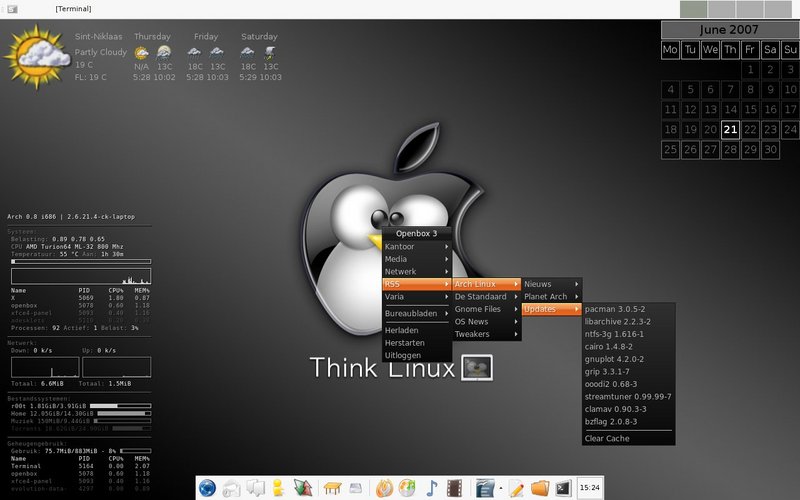

- LINUX MOUSELESS WINDOW MANAGER FULL
- LINUX MOUSELESS WINDOW MANAGER CODE
- LINUX MOUSELESS WINDOW MANAGER WINDOWS
The concept of “pointing anywhere into a window and then pressing a key for a certain action” (where “key” may refer to a key on the keyboard, or the combination of a modifier key of the keyboard and a mouse key click, e. Alternative? Press Alt, hold down the right mouse button anywhere inside the window and resize the window as you like. Resizing a window by “picking” its narrow border also requires precision. In case a window manager uses title bars or tabs to move a window, you need to place the mouse pointer into it, which requires more precision. For example, a common way to move a window on the screen is pressing the Alt key and clicking somewhere into the window, then dragging it. The keyboard removes the requirement of nearly pixel precise movement of the mouse.
LINUX MOUSELESS WINDOW MANAGER WINDOWS
But I’ll assume that you don’t make a generic claim here (which would obviously be nonsense), but consider the operations of a window manager, which is managing windows (and maybe applications). That heavily depends on what the interface… interfaces to, what kind of program or functionality. It just moves out of your way, so you really don’t find yourself distracted from your tasks.įirst, a mouse-based interface has been proven to be faster than a keyboard-based interface. After getting accustomed to its key bindings and some configuration you nearly forget about it. The word calm in the cwm’s name isn’t accidental. The new settings can be applied to running instance of cwm without restarting the session. The only default binding is the invocation of xterm by pressing control, meta (left alt) and enter keys simultaneously.Īdditionally, the user may configure screen border offsets, so that cwm can be used with external toolbar like dzen, xmobar, xstatbar or even as a window manager for GNOME. The user may add, modify or remove shortcuts, change colors and other aspects of window management behavior.Īrbitrary commands can be bound to key combinations. Several aspects of cwm may be configured by editing ~/.cwmrc. In order to make groups behave as virtual desktop the user can enable the sticky mode, so that all new windows would be assigned to the default group. The groups themselves can be manipulated the same way as windows – they can be hidden, lowered and raised with shortcuts. Instead it supports window groups, which can be used to emulate virtual desktops in a similar manner as they are in most dynamic window managers.Įach window can be assigned to any number of groups. There is no virtual desktop concept in cwm. known_hosts file entries, windows names) and removes the entries that doesn’t match the user’s input.

The main principle is the same for all these actions: cwm shows a list of relevant content (executables in $PATH. Launching applications, switching windows, connecting to other hosts using SSH – everything can be done by searching the relevant list. Naturally, the default shortcuts are vi-like.įurthermore, cwm can be configured to move the mouse cursor, so that one could use the computer without any pointing device.
LINUX MOUSELESS WINDOW MANAGER FULL
Cwm has different shortcuts for resizing and moving windows by 1px and by 10px, and a shortcut to resize a window to full screen. Cwm is pretty good in doing so – it allows the user to manage windows with keyboard shortcuts so that one doesn’t actually need to touch the mouse.Įverything can be done from the keyboard: resizing, moving, hiding, raising or lowering windows, etc. The main goal of every minimalist window manager is to get out of the user’s way. A bunch of new features were added within a couple of months and cwm replaced wm2 as OpenBSD’s minimalist window manager in November 2007 with the release of OpenBSD 4.2. The project was reborn in April 2007, when it was imported into OpenBSD’s base. After year of development the original author lost interest and stopped updating cwm.
LINUX MOUSELESS WINDOW MANAGER CODE
The development of cwm was started back in 2004, when Marius Aamodt Eriksen released a rewrite of evilwm, needed to support several new features that were difficult to implement in evilwm’s code base. It is relatively unknown outside the OpenBSD community, but it deserves more notice. Calm window manager (mainly known for its shorthand name cwm) is a member of a once-powerful and now-declining family of minimalist X11 window managers.


 0 kommentar(er)
0 kommentar(er)
